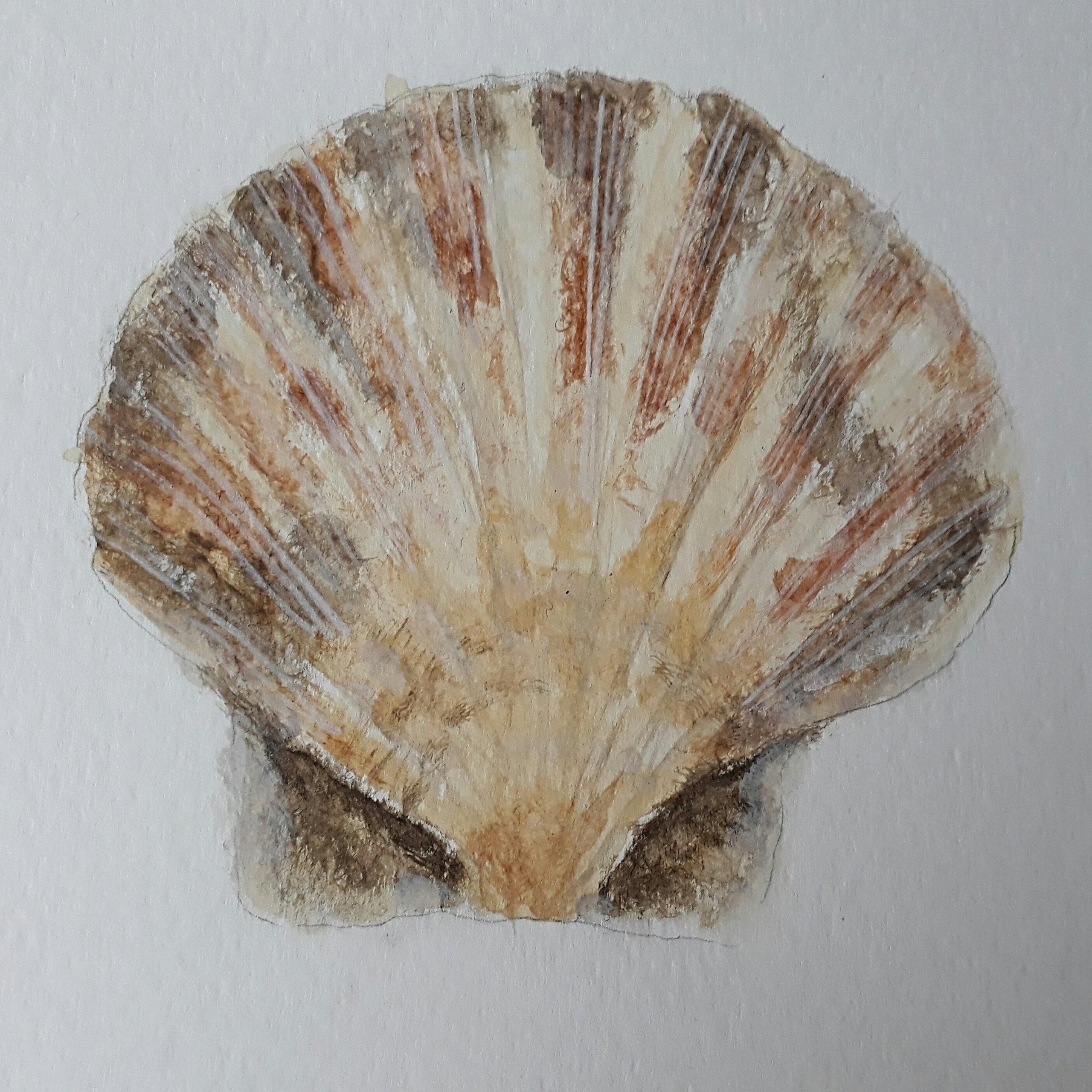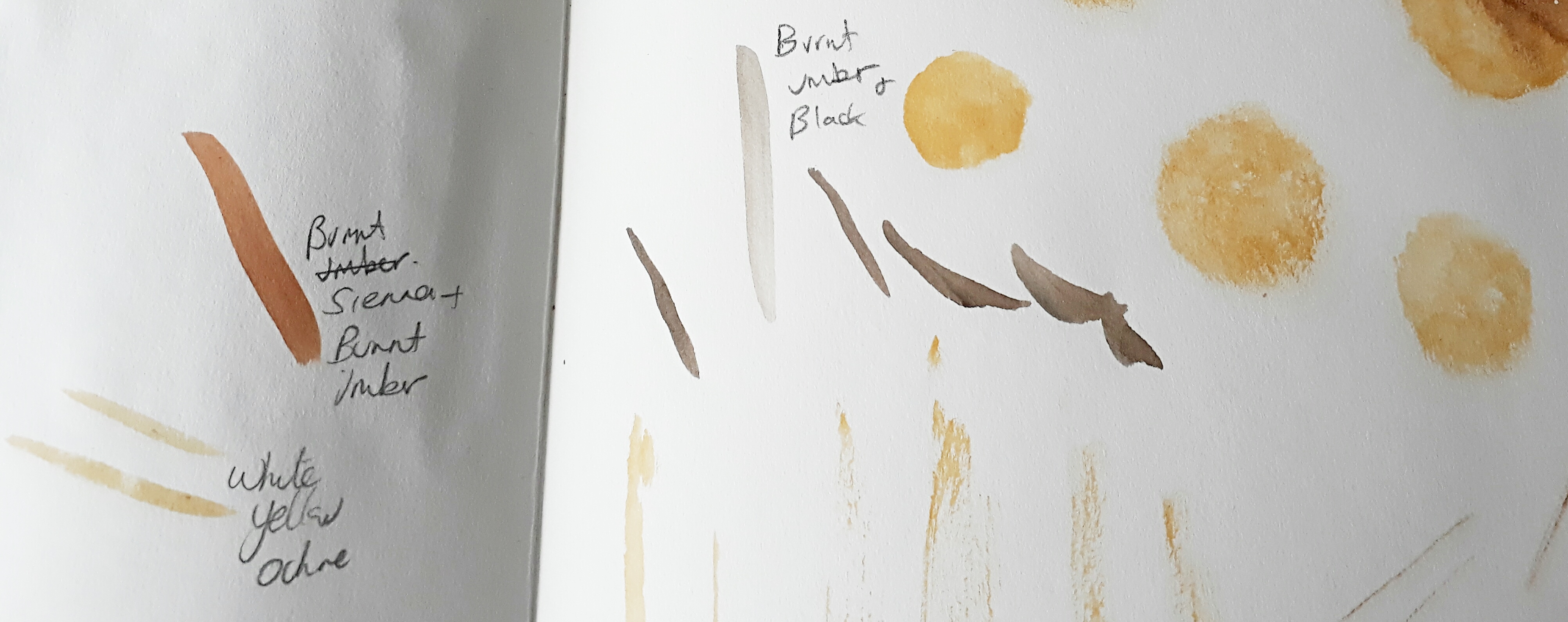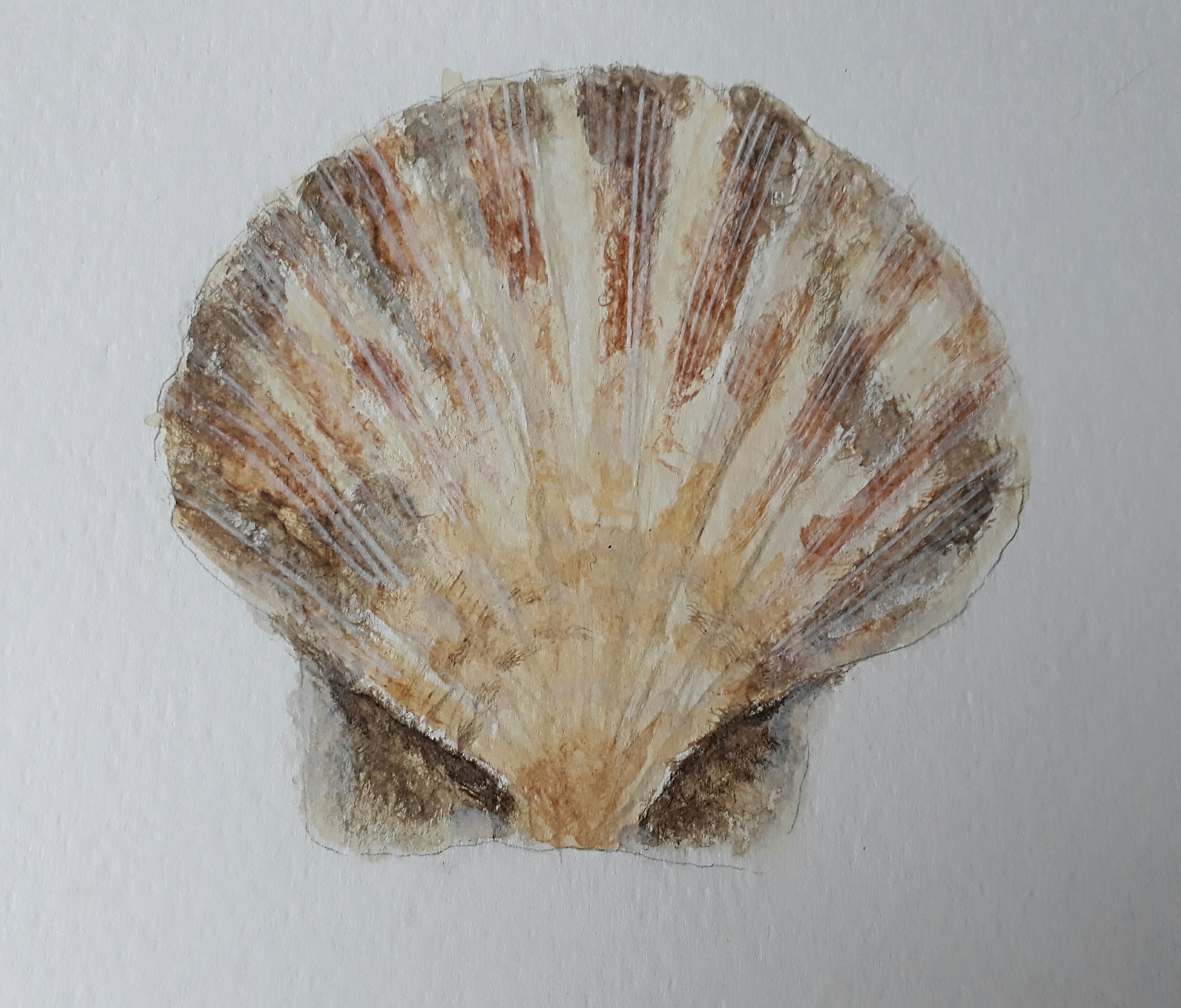
Shell in Watercolour Tutorial
Once again art class was great today. Our tutor gave us a 20 minute presentation using the dry brush technique, which I’ve never attempted and I can definitely vouch for this way of painting for lots of subjects. It’s generally used for botanical work and intricate stuff, you know where lots of patience is needed. I loved this method because I felt for once in my painting experience I had more control. I do tend to use loose washes of watercolour and let these flow and merge, which I enjoy. There is a problem with this working method though, you have very little control. If you make a mistake, and the paint doesn’t move the way you want it to go, you’re kind of buggered and will have to start again; yet this process allows you to use small strokes with drier paint which enables you to control its movement.
The subject matter was shells, either using pictures or objects. I chose a medium sized shell and our tutor asked us to mix some colours that were near enough similar to our shells. There were really only 3 colours on mine so I mixed yellow ochre with a touch of white for the background, burnt sienna and a small amount of burnt umber for the orange bits, and burnt umber with a tiny amount of black for the darkest areas and shadows around the base. Just a tip here. Don’t use neat black. It’s too jarring and heavy and will detract your observers from your beautiful work. Mix a dark brown. I use blue ultramarine and burnt umber.
It’s best to mix your colours to begin with so that they are ready, all 3 of them. You make a puddle of paint for each colour, but not too watery, and you leave this to dry for a few minutes. You then mix a looser wash of the yellow ochre and white to paint over your shell shape as a base, which you let dry again for 5 minutes (leaving some white of the paper in areas. This will give you some highlights later on), then you begin by applying your colours starting with the lightest first. Our tutor demonstrated that the water on your brush has to be barely there. Use your smallest brush, remember this is intricate stuff, place the brush into the clear water and wipe off the excess onto some absorbent kitchen paper so that the bristles are damp, not dripping. You then add some paint; say you begin with the drier yellow ochre and white, and dab off once again onto the kitchen paper, you are then ready to apply in small circular movements. You are looking for texture whilst being able to see small amounts of paper beneath. The consistency on the paper should be very dry.
Before you begin you can practice using these techniques by creating fine lines, dots and broken dry coverage.
 Here is a photograph of my practice page so you can have an idea of the textures and colours I used.
Here is a photograph of my practice page so you can have an idea of the textures and colours I used.
Below is my final painting. I am quite happy with it but I probably would’ve used masking fluid at the beginning to create the fine lines that begin from the base of the shell to the outer edge. After the painting was finished, I would have peeled this away to reveal the white paper as the fine line effect. As this was my first attempt, I was unsure of how to apply this effect until I reached the end, so I used a rigger brush (thin fine long bristled) to apply white paint over the top. I don’t think this way worked quite as well, but overall it’s passable.
If you have a go let me know how you get on in the comments. x



One Comment
Amna
This is an old post but WOW it is beautiful! Your watercolours are incredible, the colours you got here are so realistic I can’t imagine ever being able to do this. Just wanted to say that I love it xx